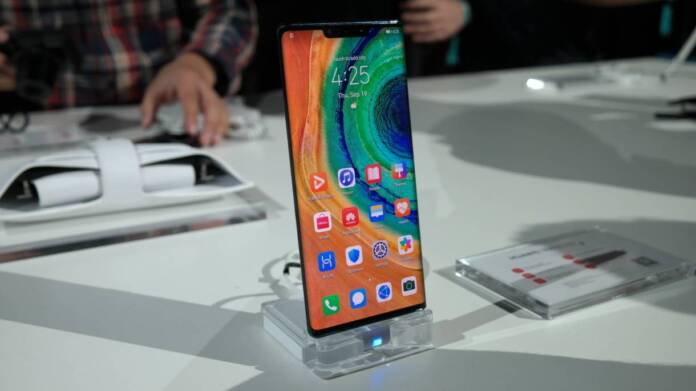By the end of the year, Huawei is said to be producing smartphones again that are equipped with self-designed and 5G-capable processors. The signs of this have been growing for weeks: First, the Reuters news agency reported on the plans, citing company sources . Meanwhile , the Taiwanese Digitimes has jumped on the bandwagon .
Accordingly, Huawei has its own systems-on-chip (SoCs) manufactured by the Chinese chip contract manufacturer SMIC using its 7-nanometer technology. SMIC has been testing 7nm production for more than a year : in 2022, the company MinerVa presented Bitcoin miners using tiny 7nm chips from SMIC.
With technology from ASML
The necessary know-how for the advanced chip production is said to come in part from former employees of the world market leader TSMC. ASML supplies the lithography systems: To date, the export restrictions have only applied to the most modern machines with extreme ultraviolet (EUV) exposure technology (13.5 nm wavelength).
For its 7 nm process, SMIC exclusively uses machines with deep ultraviolet (DUV) exposure technology (193 nm wavelength). For some structures, the manufacturer has to expose the silicon wafer several times (multi-patterning). TSMC used a similar process on N7 to launch the 7nm generation.
From September, the Netherlands will further restrict exports to China . ASML may then only sell older lithography systems to SMIC & Co., which are basically still suitable for 7 nm production, but work more slowly and have a higher error rate.
Low quantities
The production capacity at SMIC is said to be still low. According to Digitimes, Huawei allegedly wants to deliver 2-3 million smartphones with its own processors – usually this means the delivery volume per year. Reuters previously wrote of two to four million smartphones.
SMIC’s yield of functional 7 nm processors on a silicon wafer is said to be less than 50 percent. Smartphone SoCs are usually around 80 to 125 mm² in size. Extrapolated, SMIC would therefore come up with less than 2000 exposed wafers per month. For comparison: TSMC, Samsung and Intel are building new semiconductor plants with a target of about 40,000 wafers per month.
According to estimates, Huawei’s new processors should – unsurprisingly – not be quite as fast as Qualcomm’s top models. Nevertheless, they should come in new high-end smartphones. Qualcomm’s Snapdragon 8 Gen 2, for example, is created at TSMC with 4 nm structures. Qualcomm is currently allowed to sell its processors to Huawei, but only with the 5G function disabled. Without Google services, the devices are mainly interesting for the Chinese market.
According to media reports, Huawei wants to sell around 40 million smartphones in 2023. In 2023, i.e. before the export restrictions came into force, according to the company, there were still 240 million devices , including smartphones from the former Honor subsidiary.













